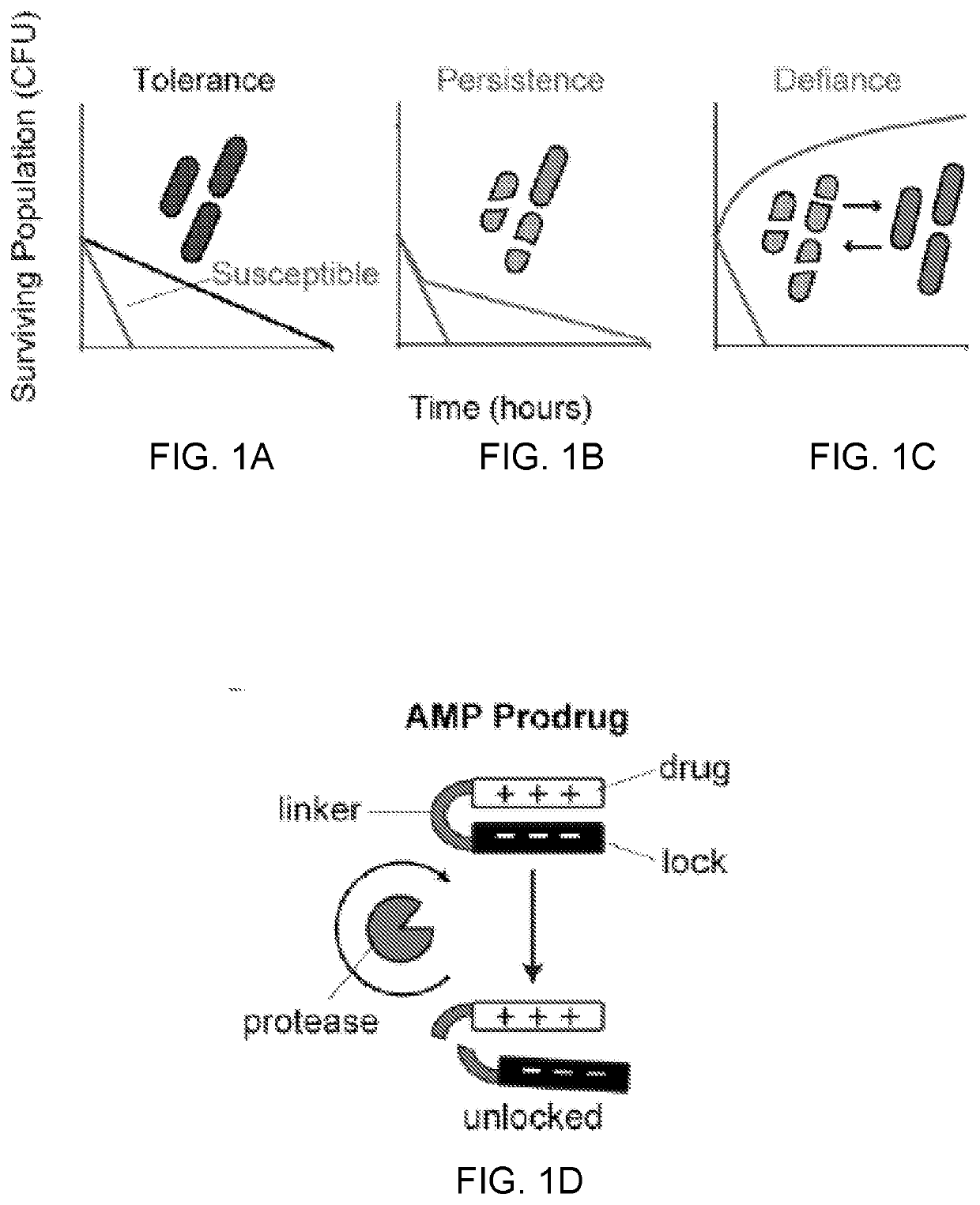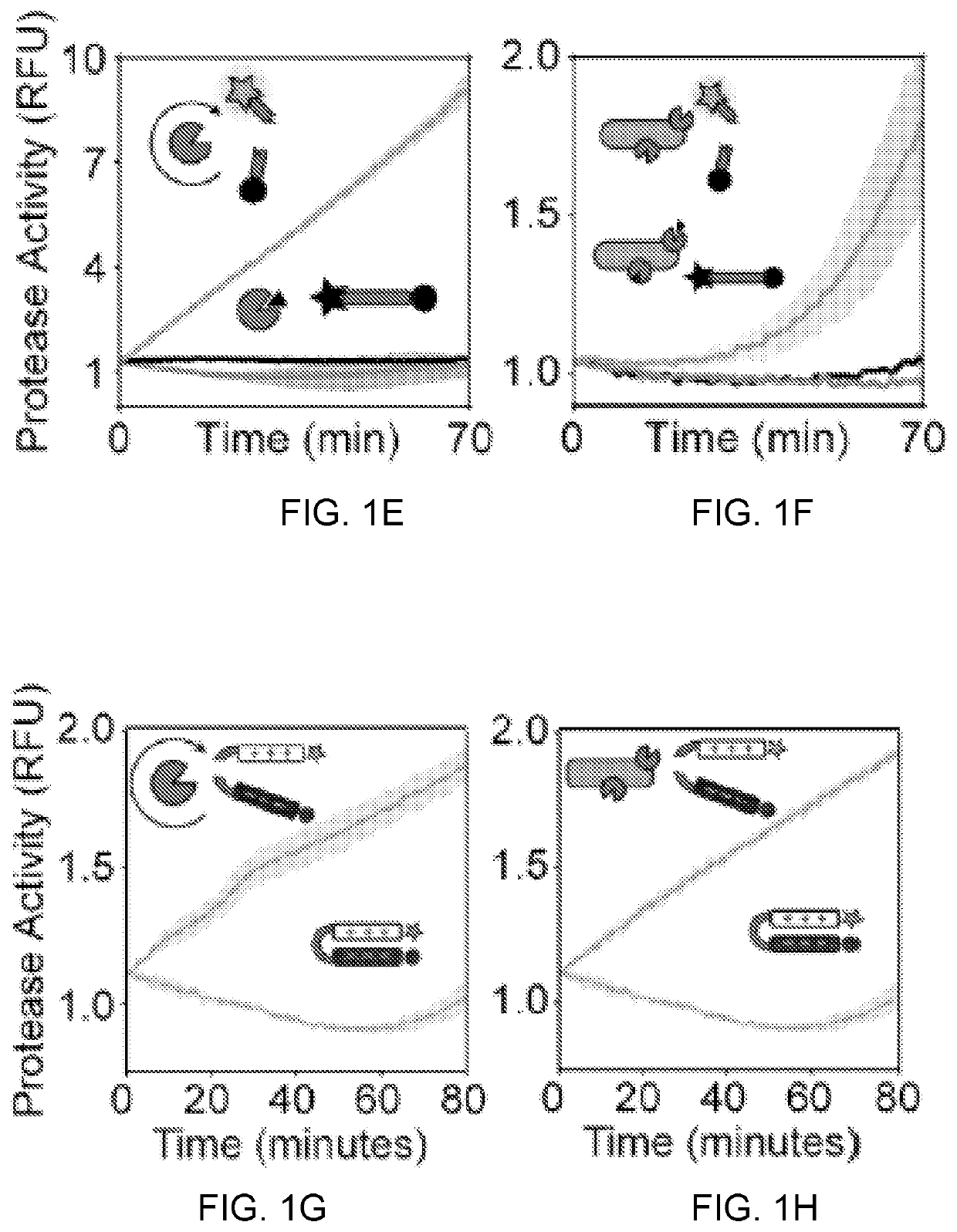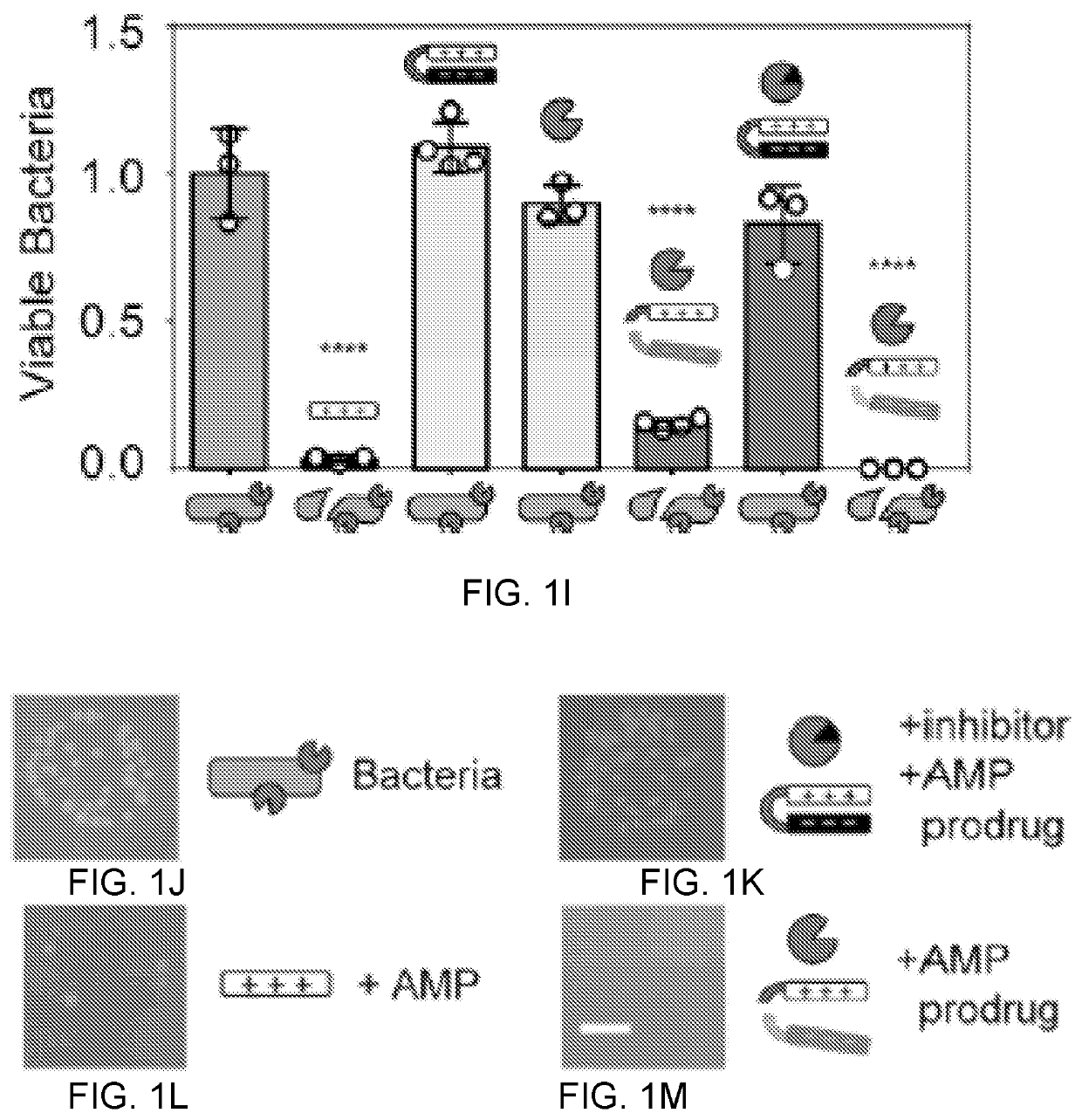Self-titrating bacterial protease-activated prodrug
- Summary
- Abstract
- Description
- Claims
- Application Information
AI Technical Summary
Benefits of technology
Problems solved by technology
Method used
Image
Examples
example 2
odel of Prodrug Treatment Reveals a Binary Outcome
[0084]Results:
[0085]To quantitatively understand how the rate of prodrug activation competes with the number of living bacteria, a mathematical model was built using a system of nonlinear ordinary differential equations (ODE). In said system, the three dynamic populations are the Bacteria, B, the Locked drug, L, and the Unlocked drug, U, for which governing ODEs were formulated by considering the system parameters that affect populational change over time. For this prodrug system, increased E. coli growth results in increased proteolytic activation of AMP, which in turn lyses bacteria to create a negative feedback loop. Therefore, the bacteria population B was modeled as increasing the rate of enzymatic drug conversion (i.e., L to U) and the unlocked drug population U as increasing the rate of bacterial death (FIG. 3A). To account for the fact that bacterial growth rate, r, slows down as environmental resources become limiting (i.e.,...
example 3
g Bacterial Defiance with a Dimensionless Parameter
[0088]Results:
[0089]Having demonstrated that bacteria exposed to a prodrug exhibit a binary outcome—susceptibility (i.e., death) or defiance (i.e., survival)—it was next determined whether the behavior could be quantified by a metric of resistance that could be generalized across broad treatment conditions. Based on the model and experimental validation, it was observed that under defiance, populations of live bacteria expanded (i.e., positive growth rate) throughout the course of treatment, which implied that key bacterial growth parameters (e.g., r, Bmax) were greater in value than enzyme-driven death rate parameters (e.g., kcat, Km) (FIGS. 3B-3J, 4A-4B). Therefore, to derive a metric to discriminate between defiant and susceptible bacteria, Buckingham Pi theorem was used to identify a dimensionless quantity that represents the competing balance between growth rate and enzymatic turnover, which we defined as the Bacterial Advantag...
example 4
Bacterial Defiance with Prodrug Biological Circuits
[0091]Results:
[0092]The model revealed that bacterial defiance arises during prodrug monotherapy when environmental parameters, as represented by a dimensionless constant, cross a critical transition BAH value. To combat bacterial defiance, a multi-prodrug approach was designed to eliminate defiant bacteria that would otherwise resist treatment to a single prodrug (FIG. 7A). To do this, it was recognized that the bacterial switch from susceptibility to defiance could be considered as behaving analogously to electronic transistors—transistors allow input current (Iin) to pass (Iout) when the gate voltage (G) crosses a threshold, whereas with AMP prodrugs, input bacteria (Bin) survive treatment (Bout) when the BAH (gate) crosses a critical value (FIG. 7B). Under this analogy, it was postulated that multiple prodrug biological transistors could be used to construct logical operations (i.e., AND, OR, NOT gates) that allow for the design...
PUM
 Login to View More
Login to View More Abstract
Description
Claims
Application Information
 Login to View More
Login to View More - R&D
- Intellectual Property
- Life Sciences
- Materials
- Tech Scout
- Unparalleled Data Quality
- Higher Quality Content
- 60% Fewer Hallucinations
Browse by: Latest US Patents, China's latest patents, Technical Efficacy Thesaurus, Application Domain, Technology Topic, Popular Technical Reports.
© 2025 PatSnap. All rights reserved.Legal|Privacy policy|Modern Slavery Act Transparency Statement|Sitemap|About US| Contact US: help@patsnap.com



